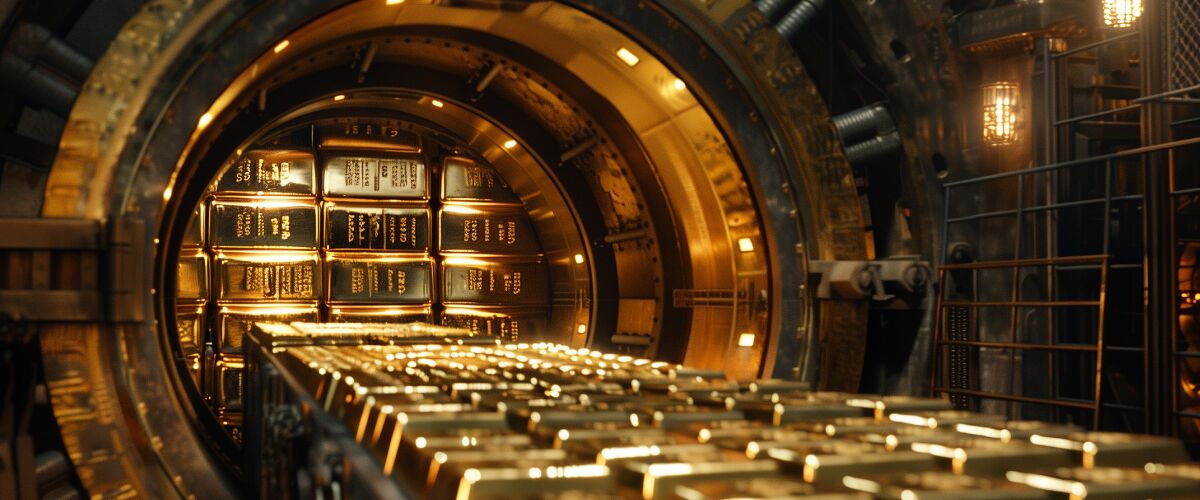In the last few months, we’ve noted increasing interest from clients wanting to take physical delivery of their precious metals holdings.
This appears to be a worldwide trend.
Colleagues in Switzerland, Hong Kong, and Singapore have informed us that many of the wealthiest investors in Asia and Europe are now demanding delivery of their gold holdings from bonded warehouses in London, Chicago, and elsewhere.
Free Wealth Protection Insights
Enter your email below to receive our weekly briefings on better ways to preserve your wealth, legally reduce your tax bill, and better protect what you’ve worked hard to build.
The Nestmann Group does not sell, rent or otherwise share your private details with third parties. Learn more about our privacy policy here.
PLEASE NOTE: This e-series will be delivered to you via email. You should receive your first message minutes after joining us. By signing up for this course, you’ll also start to receive our popular weekly publication, Nestmann’s Notes. If you don’t want to receive that, simply email or click the unsubscribe link found in every message.
Counterfeit Gold Bars: The Tungsten Deception
Then last fall, a report emerged that China’s central bank had discovered 400-ounce gold-plated tungsten bars among those it had recently received from bonded warehouses. Assays were said to reveal at least four counterfeit bars, all supposedly from sources in the United States.
We’re not sure how much credence to give this story, and we’ve not been able to independently confirm it.
A colleague of ours has excellent contacts on the Chicago Mercantile Exchange. He doubts it could be possible. This is because all gold bars submitted to exchange-certified warehouses are re-assayed to make them “good delivery”.
Since 1925, since the modern clearing corporation was developed, this source tells us there has never been a seller/buyer or purity default for so much as one micron of metals.
But, if you were going to make counterfeit gold bars, tungsten would be the ideal metal to use.
Tungsten costs about 1/3000 as much as gold, but has almost the exact density. A tungsten bar plated with gold is almost indistinguishable from the genuine article, because it’s virtually the same size and weight.
Given this opportunity, it’s not surprising that you can buy gold-plated articles made with a tungsten core. One source is a Chinese company called Chinatungsten. The company’s website proclaims:
“A coin with a tungsten center and gold all around it could not be detected as counterfeit by density measurement alone.”
Larger gold bars are the most obvious targets for counterfeiters.
But recently, a gold refiner in Germany discovered a 500-gram gold-plated tungsten bar submitted to it by a bank.
How to Detect Counterfeit Gold
The only way to detect a gold-plated tungsten bar is to perform an assay.
And just not any assay will do. The relatively low cost x-ray fluorescence technique will not detect a gold-plated tungsten bar.
You need very expensive, specialized equipment to perform a non-invasive assay of the entire bar. A physical assay costs less in most cases, but requires drilling into the bar.
How to Protect Yourself from Counterfeit Gold
If you’re a small investor, buy smaller coins and bars one ounce or smaller in size. These sizes are small enough that a gold plated tungsten fake would have a very different feel and “ring” due to the brittleness of tungsten compared to the malleability of gold.
Also, buy from a dealer with an impeccable reputation, particularly if you store the gold, rather than taking personal delivery.
Considering buying gold coins or bars for investment?
Here you can find more information on best gold coins to buy and best gold bars to buy.
Gold Storage Solutions
If you’re a larger investor with holdings in bonded warehouses, you have the right to take delivery of your gold. Commodity exchanges don’t guarantee the purity of the gold bars they deliver, although buyers seldom perform an assay. This is because the chain of custody requirements bonded warehouses must follow are so rigorous. But, you have the right to perform an assay of your holdings, or have an expert do so, to verify their authenticity.
Also be aware of the differences between “allocated” and “unallocated” storage of gold. Allocated storage means that a bank or warehouse has specific coins or bars that you own set aside. Unallocated storage means that you have an ownership interest in a gold pool. Unallocated storage is therefore less expensive and a preferred storage option for many investors.
But, if a bank or warehouse has counterfeits in its unallocated inventory, it could potentially default on deliveries. That would almost certainly lead to its bankruptcy. You would then become an unsecured creditor and apply to the bankruptcy trustee for relief.
Allocated vs. Unallocated Storage
Banks or private vaults that store your metals in a common area (i.e., not in a safe deposit box) use two storage options: allocated and unallocated storage.
- Allocated storage means a bank or private vault has set aside specific coins or bars that you own. There’s also semi-allocated storage, in which you have a fractional ownership interest in a specific bar of precious metal.
- Unallocated storage means that rather than owning specific coins or bars, you have a fractional ownership interest in a pool of precious metals.
While unallocated storage is significantly less expensive than allocated or semi-allocated storage, it’s also riskier. Since you don’t own specific bars or coins, you have no way to inspect your actual holdings. Some companies that offer unallocated storage don’t even permit redemption in metal – you must accept a cash settlement. This can have unpleasant tax implications if you have substantial unrealized gains in the metals as they will be deemed sold, even if that wasn’t your intention.
As well, if a vault is forced into bankruptcy, metals in unallocated storage may become part of its balance sheet, potentially exposing your holdings to its creditors.
Precious metals you store in a safe deposit box (domestic or offshore) at a bank or private vault (domestic or offshore) are neither allocated nor unallocated. The metals are your property and shouldn’t be part of the vault-owner’s balance sheet (but be sure to check). But unlike allocated or unallocated storage, the vault isn’t responsible for safekeeping a specific quantity of metals on your behalf. In most cases, the vault won’t know what items you keep in your box and will charge a flat fee regardless of their value.
How to Ship Gold Internationally
Shipping gold overseas from the US might sound straightforward. But it can be quite a process. If you’re thinking about it, here’s what you need to know: how to ship gold internationally.
The bottom line is that the safest way to own gold is to take physical possession of smaller coins and bars, and store the gold in a safe location. That way, you avoid any possibility of owning counterfeit gold.
6 Ways to Store Precious Metals
If you’re wondering how best to store your precious metals, you’ve come to the right place. Here we’ll talk about six different proven options from simplest and easiest to more expensive but with the best security: how to store precious metals.
Need Help?
Since 1984, we’ve helped more than 15,000 customers and clients protect their wealth. For its proven record as a wealth preservation, gold has often been a part of that planning.
If you’re interested in using gold for the same purpose, and aren’t quite sure where to start, please book an introductory consultation with one of our Associates to see if a wealth protection plan is right for you.













